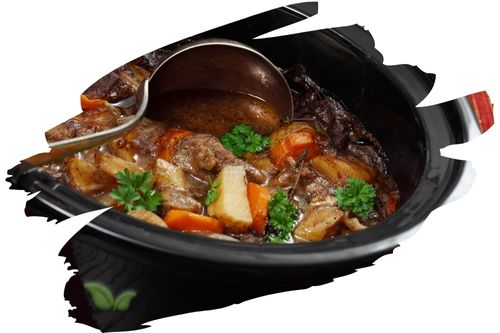
Introduction
Unveiling the Mysteries of Ginseng: A Comprehensive Guide
Welcome to an in-depth exploration of "what is ginseng?" In this article, we'll delve into the world of ginseng, a remarkable herb with a rich history and a wide range of applications. Our journey will take us through the origins, types, cultivation, and cultural significance of ginseng. Please note that we won't be discussing its health benefits in this article, as we focus on providing a holistic understanding of this fascinating plant.
What is Ginseng?
Ginseng Unveiled
Ginseng, scientifically known as Panax, is a perennial herb that belongs to the Araliaceae family. This remarkable plant has been revered for centuries for its unique properties and cultural significance. Ginseng is characterized by its fleshy roots, which are often forked and resemble the human body. The name "Panax" even comes from the Greek word "panacea," meaning "all-healing," highlighting the plant's historical reputation.
Ginseng is primarily found in Asia, North America, and parts of Siberia, each region having its unique species. The two most well-known types are Asian ginseng (Panax ginseng) and American ginseng (Panax quinquefolius). These varieties differ in appearance, taste, and chemical composition.
Ginseng Varieties
Exploring Different Types of Ginseng
1. Asian Ginseng
Asian ginseng, also known as Korean or Chinese ginseng, is characterized by its more stimulating properties. It's widely used in traditional Chinese medicine and is believed to have a warming effect on the body.
2. American Ginseng
American ginseng, on the other hand, is known for its milder properties. It's often used in traditional Native American remedies and is believed to have a cooling effect on the body.
3. Siberian Ginseng
Siberian ginseng, although not a true ginseng, is another variety worth mentioning. It's often used as an adaptogen to help the body cope with stress.
The History of Ginseng
Tracing Ginseng's Roots Through Time
Ginseng has a storied history that spans thousands of years. Its use can be traced back to ancient Chinese texts, where it was revered as a symbol of vitality and longevity. Emperors and scholars alike sought ginseng for its believed rejuvenating properties.
Cultural Significance
Ginseng as a Symbol
In various cultures, ginseng has held symbolic significance. It's often seen as a token of good luck, and ginseng-shaped objects are sometimes given as gifts to bring prosperity and health.
Ginseng Cultivation
Growing the 'Root of Life'
Ginseng cultivation is a meticulous process that requires specific conditions and patience. Here, we'll briefly explore how ginseng is grown without diving into its health benefits.
Ideal Growing Conditions
Creating the Perfect Habitat
Ginseng thrives in specific conditions, including well-drained soil, cool temperatures, and dappled shade. These conditions mimic ginseng's natural habitat in the forest understory.
The Growing Process
From Seed to Harvest
The cultivation process begins with planting ginseng seeds in the fall. These seeds take several years to grow into mature plants. The roots are typically harvested after five to six years, once they've reached their peak potency.
Cultural Uses of Ginseng
Beyond Herbal Remedies
Ginseng's importance extends beyond medicine. It has a significant cultural presence in various aspects of life.
Culinary Uses
Ginseng in the Kitchen
Ginseng is not just for medicine; it's also used in culinary dishes. In Asian cuisine, ginseng is added to soups, teas, and even liqueurs, imparting a unique flavor and potential health benefits.
Ginseng in Art and Symbolism
Ginseng in Culture and Art
Ginseng often appears in art, literature, and symbolism in Asia and North America. Its distinct shape and perceived powers make it a subject of fascination.
Frequently Asked Questions
Q: How is ginseng traditionally consumed? Ginseng is traditionally consumed in various forms, including dried roots, teas, capsules, and even in culinary dishes.
Q: Can I grow ginseng in my backyard? Yes, you can grow ginseng in your backyard if you provide the right conditions, such as shade and well-drained soil.
Q: Is ginseng endangered due to overharvesting? Certain wild ginseng populations are at risk due to overharvesting, but sustainable cultivation practices help mitigate this issue.
Q: Does ginseng have any side effects? While ginseng is generally safe, it may interact with certain medications or cause side effects in some individuals. Consult a healthcare professional before use.
Q: Are there any ginseng festivals or celebrations? Yes, some regions hold ginseng festivals to celebrate the plant's cultural significance. They often feature ginseng-themed events, food, and art.
Q: Can ginseng be used as a gift? Yes, ginseng is often considered a thoughtful and meaningful gift, symbolizing health and prosperity.
Conclusion
Unlocking the Mysteries of Ginseng
In this comprehensive article, we've explored the fascinating world of ginseng without discussing its health benefits. From its origins and cultivation to its cultural significance, ginseng has left an indelible mark on human history and culture. We hope this article has provided valuable insights into "what is ginseng?" and has piqued your interest in this incredible herb.
Alert: While spices can have many beneficial properties for health, using them for medical purposes should be done under the guidance and supervision of a healthcare professional or specialist. Some spices may interact with medications or cause adverse reactions in certain individuals, and it is important to use them safely and appropriately. If you are considering using spices for a medical condition, it is important to consult with a healthcare professional before doing so.




















































